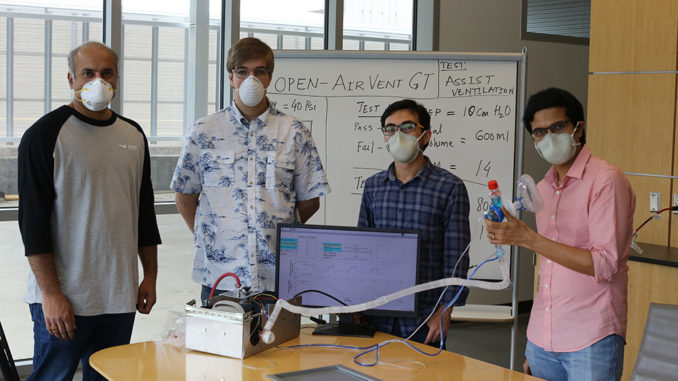
ATLANTA, GA (TIP): An Indian American led team has developed a low-cost, portable ventilator meant to help doctors around the world treat COVID-19 patients. Devesh Ranjan, a professor and associate chair in the prestigious Georgia Tech’s George W Woodruff School of Mechanical Engineering and his research team at the Georgia Institute of Technology has created a prototype for a low-cost, portable emergency ventilator that uses electronic sensors and computer control to manage key clinical parameters such as respiration rate, tidal volume (the amount of air moved into and out of the lungs during each cycle), inspiration and expiration ratio, and pressure on the lungs.
The Open-AirVentGT was designed to address acute respiratory distress syndrome (ARDS), a common complication for COVID-19 patients which causes their lungs to stiffen, requiring their breathing to be assisted by ventilators. Unlike many other emergency ventilators, the new Georgia Tech device endeavors to make breathing more natural by allowing patients to trigger their own breaths instead of relying on a respiration rate pre-set in the device.
The ventilator works by pneumatically compressing a BVM (Bag Valve Mask) assembly of the kind used in hospitals and carried in ambulances as resuscitation devices. The ventilator is envisioned for use outside the United States in countries that do not have significant medical infrastructure in place, and is designed to be produced for around $300.
A projected shortage of ventilators prompted by the COVID-19 pandemic has led to development of makeshift ventilators, many of them based on differing mechanical strategies to compress BVM devices. Ranjan and his research team evaluated what others had done and sought input on clinician needs from critical care specialists at two Atlanta hospitals during the design of the Open-AirVentGT.





Be the first to comment